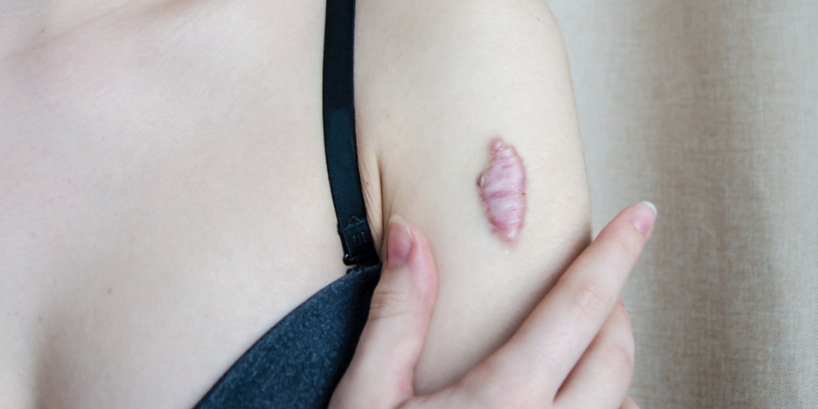Hypertrophic scarring and keloid is a condition characterized by excessive scar development that occurs in the skin, especially in the upper body, as a result of abnormal response in wound healing, which can adversely affect people in functional, visual and cosmetic terms.
How to heal scars on the skin after trauma?
At the end of the repair process that occurs after any kind of trauma that disrupts the integrity of the skin, scarring may occur, albeit to a lesser extent. However, in some people, healing is uncontrollable and scar tissue can be uncontrollably exaggerated. When the repair process results in excessive scar formation beyond expectations, it is called "Hypertrophic Scar" (HS) or "Keloid".
What is Hypertrophic Scar?
Following skin traumas such as cuts, bumps, bumps, etc., it is a condition that is slightly raised from the skin, does not feel very hard, and may be more limited bright pink, red or skin-colored. It may disappear spontaneously.
What is Keloid?
They are skin-colored or pink-red swellings that are quite raised from the skin after trauma, especially in predisposed bodies, and feel hard upon examination.
What are the Risk Factors Causing Hypertrophic Scar and Keloid Development?
People with hypertrophic scars and keloids in first-degree relatives are at higher risk. It is more common on the body, especially on the shoulders, back, upper torso and neck. All factors that delay and impair wound healing can lead to the development of prominent scar tissue.
How are Hypertrophic Scars and Keloids Diagnosed?
The clinical presentation of the findings in patients is sufficient for diagnosis.
What are Hypertrophic Scar and Keloid Treatment Options?
* Superficial creams (cortisone creams, tissue regulating silicone gels)
* Intralesional injection (cortisone injection)
* Cryotherapy (Ice, freezing treatment)
* Fractional laser and Golden needle treatment
How to respond to treatment?
The treatment process may take a long time. The combination of more than one of the above-mentioned treatment approaches will increase your chances of cure. Factors affecting the success of treatment are the resistance capacity of the scar, the effectiveness of the treatments applied and the patient's compliance with the treatment.

